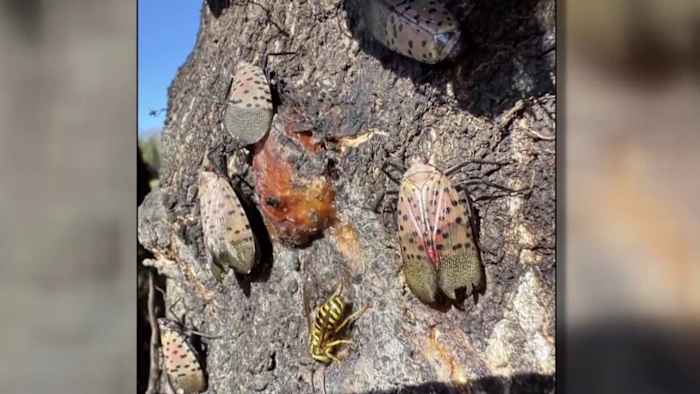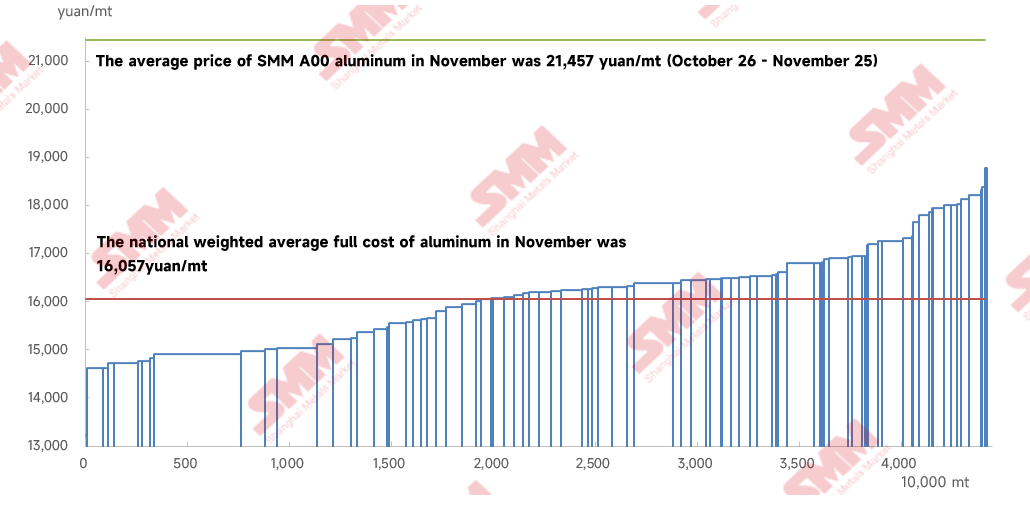How removing the invasive Tree of Heaven can prevent spotted lanternfly infestations – WSLS

Report on the Ecological Threat of Invasive Species in Southwest Virginia and Implications for Sustainable Development Goals
1.0 Introduction: A Dual Threat to SDG 15 (Life on Land)
An ecological assessment of Southwest Virginia reveals a significant threat to local biodiversity and ecosystem stability, directly challenging the objectives of Sustainable Development Goal 15 (Life on Land). The proliferation of the invasive Tree of Heaven (Ailanthus altissima) has created a favorable environment for a secondary invasive species, the spotted lanternfly (Lycorma delicatula). This report details the nature of this symbiotic invasion, its impact on terrestrial ecosystems, and the management strategies required to mitigate its effects in alignment with global sustainability targets.
2.0 Analysis of Invasive Species
2.1 The Tree of Heaven (Ailanthus altissima)
The Tree of Heaven is a highly successful invasive species that undermines SDG Target 15.2 concerning the sustainable management of forests. Its characteristics impede the growth of native flora and disrupt natural habitats.
- Aggressive Proliferation: A mature tree can produce over 350,000 seeds annually, facilitating rapid spread along roadsides and in natural areas.
- Allelopathic Properties: The tree releases chemicals that inhibit the growth of competing native plants, reducing local biodiversity.
- Historical Context: Introduced to the U.S. in the late 1700s, its unchecked spread poses a long-standing environmental challenge.
2.2 The Spotted Lanternfly (Lycorma delicatula)
First detected in the U.S. in 2014, the spotted lanternfly’s spread is closely linked to the presence of its preferred host, the Tree of Heaven. This insect poses a direct threat to SDG Target 15.8, which calls for measures to control invasive alien species.
- Feeding Habits: The lanternfly is a sap-sucking insect that damages host trees by feeding on phloem.
- Secondary Impacts: The insect excretes a substance known as “honeydew,” which promotes sooty mold growth and attracts other pests, further degrading the local environment and impacting community well-being, a concern related to SDG 11 (Sustainable Cities and Communities).
3.0 Identification Protocols for Community Action
Public awareness and early detection are critical for managing these invasive species. The following identification guides support community-led efforts to protect local ecosystems.
3.1 Identifying the Tree of Heaven
Key characteristics vary with the tree’s age:
- Young Trees: Bark is smooth, thin, and light brown to greenish-gray.
- Stems: Exhibit large, heart- or V-shaped leaf scars.
- Mature Trees: Bark becomes darker gray with a diamond-like pattern.
- Old Trees: Bark may resemble cantaloupe rind or elephant skin.
- Odor: Leaves and wood emit a distinct smell, often compared to rotting peanuts.
3.2 Identifying Spotted Lanternfly Eggs
Eradication efforts are most effective when targeting egg masses. Residents should look for:
- Brownish-gray, mud-like patches on trees, outdoor furniture, or rock walls.
- Each mass contains approximately 40-50 eggs.
- The eggs are resilient to cold temperatures and hatch in the spring.
4.0 Management and Mitigation Strategies for Sustainable Ecosystems
Effective management of these invasive species is essential for making progress on SDG 15. Control measures must be strategic and informed to prevent exacerbating the problem.
4.1 Tree Removal and Control
Simple removal of the Tree of Heaven is often counterproductive, as the root system can respond by sending up numerous new shoots.
- Professional Intervention: Expert application of specific chemical treatments to the stump immediately after cutting is recommended to prevent regrowth. This targeted approach aligns with principles of responsible environmental management under SDG 12 (Responsible Consumption and Production).
- Community Vigilance: Homeowners are encouraged to identify and report sightings, contributing to a coordinated community response, which reflects the collaborative spirit of SDG 17 (Partnerships for the Goals).
4.2 Lanternfly Egg Eradication
A primary method for controlling the lanternfly population involves the physical destruction of egg sacs.
- Scrape the egg mass from the surface while applying pressure to crush the eggs.
- Dispose of the scraped material in a sealed bag containing rubbing alcohol or hand sanitizer to ensure the eggs are destroyed.
These proactive measures by community members are vital for preventing the establishment of new lanternfly populations and protecting the health of urban and wildland forests, thereby supporting the goals of both SDG 11 and SDG 15.
Analysis of Sustainable Development Goals in the Article
1. Which SDGs are addressed or connected to the issues highlighted in the article?
-
SDG 15: Life on Land
- The article’s primary focus is on the negative impact of invasive alien species—the Tree of Heaven and the spotted lanternfly—on a local terrestrial ecosystem in Southwest Virginia. It discusses how these species spread, disrupt the natural environment, and harm native plants. The text mentions that the Tree of Heaven is “one of the most widespread weed trees along roadsides and in natural areas” and that it “produces chemicals that inhibit the growth of other plants,” directly addressing the SDG 15 goal of protecting and restoring terrestrial ecosystems and halting biodiversity loss.
-
SDG 11: Sustainable Cities and Communities
- The issues described occur within a community setting, affecting homeowners directly. The article mentions the presence of these invasive species in a homeowner’s yard (“discovery of Trees of Heaven in his yard”), along roadsides, and the damage they cause to private property, such as leaving a “really, really sticky substance that people will see on their vehicles or on their sidewalks.” The call for residents to be vigilant (“advises neighbors to be vigilant”) and take action highlights the community’s role in managing the local environment, which is relevant to creating sustainable and resilient living spaces.
2. What specific targets under those SDGs can be identified based on the article’s content?
-
Target 15.8: Prevent and control invasive alien species
- This target aims to “introduce measures to prevent the introduction and significantly reduce the impact of invasive alien species on land and water ecosystems and control or eradicate the priority species.” The entire article is a case study of this target in action. It details the spread of the Tree of Heaven and the spotted lanternfly and describes specific control measures, such as professional tree removal, chemical application, and the manual scraping and disposal of lanternfly eggs (“scrape and push on it… and then dispose of that in a sealed bag”).
-
Target 15.5: Protect biodiversity and natural habitats
- This target calls for action “to reduce the degradation of natural habitats” and “halt the loss of biodiversity.” The article illustrates this by explaining how the Tree of Heaven has a competitive advantage because it “produces chemicals that inhibit the growth of other plants.” Furthermore, a homeowner’s concern about the spotted lanternfly spreading to his native “black walnut tree” and the observation that a neighbor’s “plants were dying” are direct examples of habitat degradation and biodiversity loss caused by these invasive species.
3. Are there any indicators mentioned or implied in the article that can be used to measure progress towards the identified targets?
-
Prevalence and spread of invasive species
- The article implies this indicator by describing the Tree of Heaven as a “common sight” and “widespread,” and the spotted lanternfly as “rampant and covering the trunks of their host tree.” Tracking the geographic distribution and population density of these species over time would be a direct way to measure the success of control efforts.
-
Implementation of management and control measures
- The article explicitly describes actions taken to combat the invasive species. This includes professional interventions (“removing these trees requires specific expertise,” “have the right chemical applied”) and community-based actions (“advises neighbors to be vigilant,” “scrape those off”). The adoption rate and effectiveness of these control strategies serve as a clear indicator of progress toward Target 15.8.
-
Impact on local biodiversity
- An implied indicator is the health and survival of native plant species. The article notes that a neighbor’s “plants were dying” and that the Tree of Heaven inhibits the growth of other plants. Monitoring the recovery and health of native species, like the black walnut tree mentioned, after the removal of the invasive species would be a key indicator of ecosystem restoration.
4. Table of SDGs, Targets, and Indicators
| SDGs | Targets | Indicators (as identified in the article) |
|---|---|---|
| SDG 15: Life on Land | 15.8: By 2020, introduce measures to prevent the introduction and significantly reduce the impact of invasive alien species on land and water ecosystems and control or eradicate the priority species. |
|
| 15.5: Take urgent and significant action to reduce the degradation of natural habitats, halt the loss of biodiversity and, by 2020, protect and prevent the extinction of threatened species. |
|
|
| SDG 11: Sustainable Cities and Communities | (Implicitly related) Reducing the adverse environmental impact of cities by managing local ecosystems within communities. |
|
Source: wsls.com
What is Your Reaction?
 Like
0
Like
0
 Dislike
0
Dislike
0
 Love
0
Love
0
 Funny
0
Funny
0
 Angry
0
Angry
0
 Sad
0
Sad
0
 Wow
0
Wow
0
















































:focal(1500,1000)/https://media.globalcitizen.org/a6/9a/a69a4720-d8a1-4715-b596-18738d03c05c/rotary_polio_hero_image.jpg?#)







/countries/sri-lanka/photo-credit---dmc-sri-lanka.tmb-1200v.jpg?sfvrsn=dc298bcc_1#)

















